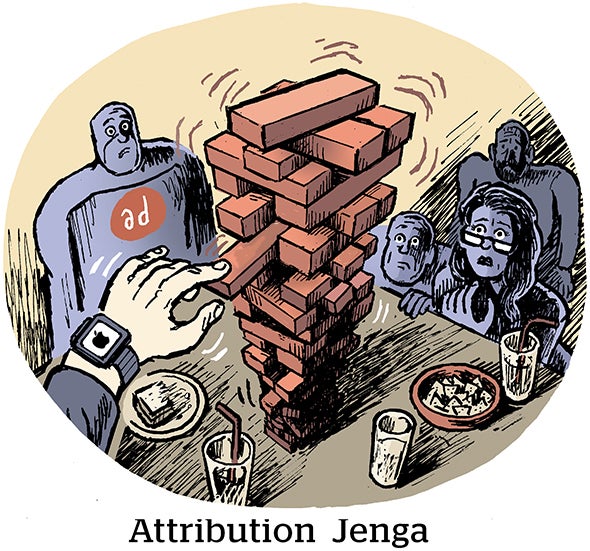Reflect.com offers customized cosmetics It used to be if a woman didn’t like the shade of lipstick she’d bought, her only options were to buy a different shade or switch brands. And where did she find out what was available? Mass marketers like Procter & Gamble barraged her (and millions like her) with brand advertising.
Now there’s a new way – she can sign up with Reflect.com and customize her cosmetics and hair products.
And who’s behind it? Procter & Gamble.
P&G, working with Institutional Venture Partners, forked over $50 million to launch Reflect last September. The new company is independent and privately owned, but P&G holds the majority interest, contributing scientific expertise, research and development and manufacturing assistance. In addition, several P&G executives sit on the Rreflect board, including CFO Clayton Daley, and global beauty chief A.G. Lafley.
Outside marketing experts are closely watching this experiment. For one thing, Reflect “has the potential to establish the new rules of the game for selling beauty products and services online,” according to a study by the nonprofit International Mass Retail Association.
But P&G is also monitoring it, for it hopes to learn about the evolving beauty market without the restraints imposed by the retail environment, says Richard Gerstein, a P&G alumnus who now services as vice president of marketing and design at Reflect.
The philosophy behind Reflect can be described in three words: one-to-one. Reflect bets on the fact that a new customer will love the shade, fragrance and everything else about a lipstick she orders, because she’s filled out an extensive profile detailing her skin type, shade preferences, fragrance desires and personality quirks to help Reflect develop the right lipstick or eye shadow for her (there are now 600,000 products, and there will be more in the fall when Reflect adds frangances to the mix). She even customizes the container, which arrives – elegantly wrapped – three to five days after she’s placed her order. Scrolled across it are her name, personal identification number and the date she created the product.
Instead of trying to upsell the new customer after the first purchase, Reflect continues wooing her: It sends her an orchid, along with a note thanking her for becoming a member of Reflect. “A lot of customers tell us, `I wish you’d tell my boyfriend to send orchids to me,'” remarks Hannelore Schmidt, a P&G alumnus who serves as Reflect’s marketing manager.
Peter Sealey, adjunct professor of marketing at the University of California at Berkeley, Haas School of Business, laughed when told of that comment. “`You treat me better than my boyfriend’ is quite a contrast from `I’m embarrassed that my husband has ring around the collar,'” he said, referring to a classic TV spot from the 1960’s.
Sealey, who once worked at P&G, adds that Reflect will help P&G learn how to sell image. “Procter & Gamble is the greatest marketer in the world of products whose results can be demonstrated, starting in 1947 with Tide detergent,” he says. “Tide worked better. But P&G has always had a hard time with image-driven products, such as cosmetics.”
But there are other benefits for P&G. The site offers the “agility for women to tell lots of things about themselves; the ability to create the right formula for the woman; and a price that’s scalable and affordable to the mass of America,” he adds.
Numbers are hard to beat out of P&G or its affiliates. But Media Metrix, the New York-based Internet business-rating company, says the Reflect site pulled 376,000 unique visitors in July (the last month for which figures are available), just behind the top two beauty sites, Eve.com and Sephora.com.
And P&H reports that about 20% of the purchases on the site, which is rated by Media Metrix as a membership site, come from repeat purchases.
Such positive results are due to the fact that Reflect knows how to communicate its image. The core of that image is customization and delighting the customer with each contact.
For example, the customer-appreciation orchid says thanks for revealing all that information about yourself and taking a chance on Reflect. And, it engenders loyalty and evangelism. More than 90% of customers who receive the orchid tell not just their best friend, but five other people about it, says Schmidt, (whose other title is director of customer delight and loyalty).
Reflect also attempts to delight customers by offering customized tips by e-mail. “For example, if you live in Atlanta and have frizzy hair, a message might say, `A humid time of year is coming, here’s how to keep your hair from getting frizzy,'” Schmidt explains. No customer receives more than one e-mail a week, and because they are tied to each buyer’s behavior, six weeks might pass without getting one.
Schmidt is testing how intrusive customers find e-mails that discuss items abandoned in shopping baskets. In one test, the e-mail identified the product left in the basket and provided an incentive for the customer to return and purchase it. Customers respond better when the message identifies the product left, she discovered. Now, she’ll test an image of the product. “The more we show the customer we know them, the better they respond,” Schmidt observes.
Reflect’s opt-out rate is about half a percent – good, particularly considering that customers sign up as members of Reflect, not to receive e-mail (an oversight Schmidt plans to remedy).
On the flip side, 50 men contacted Schmidt when they received the “Reflections of Women” e-mail promotion in September offering customers personalized CDs through affinity partner CD-Now. “They are members and said, `I’m a man – how can you assume I’m a woman?'” Schmidt recalls. “And that’s great. The expectation is that we know them.”
In general, clickthrough rates are “very high” compared with industry average, Schmidt says, but e-mail is meant to build relationships more than it is to drive sales.
Customization also underscores prospecting efforts. A July paper direct mail campaign to 250,000 women consisted of a museum-quality, personalized greeting card, an illustration of a woman and the picture of a beauty product with the woman’s name on it. Inside, was an incentive to buy something and the Reflect URL. “On a cost-per-acquisition basis, it did better than acquisition e-mail,” Schmidt enthuses. “Any time you customize or personalize a product, women respond better to that.”
Personalized gift certificates are the most successful e-mail acquisition device. In a program with online greeting card seller Blue Mountain Arts, Reflect draws on the other dot-com’s large female customer base. A woman buying an e-mail card for a female friend may opt-in to include a personalized $5 gift certificate for Reflect. “It’s a tacit endorsement,” Schmidt says.
The dot-com also e-mails $5-to-$10 gift certificates to prospects. They are graphically rich, usually featuring the trademark illustration of a woman’s form and contain a personalized number that only the recipient can redeem.
“It’s very representative of their site,” says Bill Honnef of CyberSource Corp., Mountain View, CA, which handles Reflect’s gift certificate program. “It has very high visual value and can only be redeemed by the recipient. That makes people feel they have something special from Reflect.”
Procter & Gamble’s own beauty sites don’t demonstrate Reflect’s influence much, yet. Olay.com, physique.com and covergirl.com offer some personalized informational e-mail, no e-commerce, and exist mainly to emphasize brand and drive trial. Newly launched getprofiled.com collects limited data in return for Pantene samples.
Maybe the point of Reflect is not just image-making, but money making. P&G is clearly pleased. Reflect collected $30 million in second-round financing from P&G and two venture capital firms last month. And, with purchases and revenues up 50% month-to-month, Reflect might become one of the first profitable e-mail companies, making P&G an Internet visionary.



